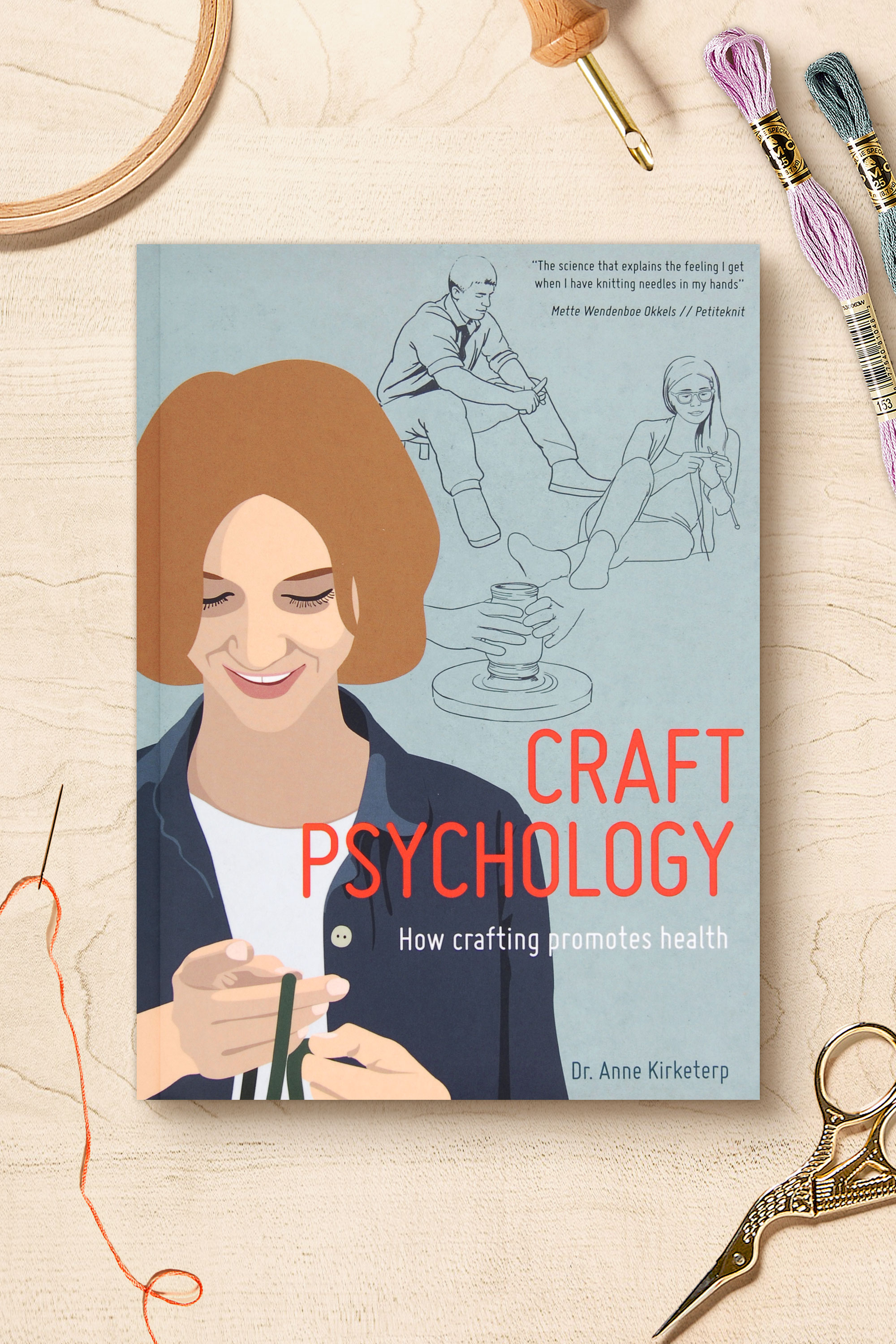Crafters have always known that craft is far more than just a pleasurable way to spend time. It’s good for you! Now the field of craft psychology is catching up and validating this old knowledge with modern science; giving us all good reason to hold space against the tide of digital entertainment so we can make things with our hands for the sake of our bodies, minds and happiness.
Research provides compelling evidence
In her book, Craft Psychology: How crafting promotes health, Dr Anne Kirketerp brings together her own empirical research with years of experience as a craft teacher and a comprehensive literature review of 424 scientific articles, to make the compelling case that we should all take craft far more seriously because it can deliver very real physical and mental health benefits. She lists the following impressive list of benefits:
Reduces stress and lowers blood pressure.
Reduces depression and anxiety.
Alleviates mental illnesses such as anorexia and schizophrenia, as well as addiction.
Diverts focus from chronic pain and illness.
Strengthens muscular mobility.
Increases well-being, joy of life, and the feeling of being useful as well as satisfaction from achieving something that creates value for others.
Reduces loneliness and social isolation.
Slows early stages of dementia.
Stimulates neuroplasticity.
How does craft deliver these benefits?
Research explains that one of the reasons craft delivers these benefits is that it can help us achieve flow states fairly easily. Flow is an optimal state of being where you feel fully absorbed in the moment. It is a helpful state of self-forgetfulness where we can find respite from our worries. It’s relaxing and reviving. Not only does it feel great to be in a flow state but it also has physiological benefits. It has a balancing effect on the heart rate, respiration and our stress hormone, cortisol.


How do you use craft to achieve flow?
You can achieve ‘flow’ by choosing a craft project that sits in the sweet spot of being difficult enough to be fully engaging but not too difficult that it becomes frustrating. Or, a project we can achieve without it being too easy such that we tire of it and feel bored. Of course, our capacity changes throughout the week. A task that provides the right degree of challenge on a Saturday morning could feel far too challenging on a tired Friday night. This is why Kirketerp advocates having at least 5 to 10 ongoing projects simultaneously.
Most people need to be able to choose from at least five to ten different projects that are in progress at the same time to find flow.

Reduce stress
Craft also helps us to induce a relaxation response because repetitive movement, which is often an intrinsic part of making, activates the parasympathetic nervous system. This ‘rest and digest’ system in the brain reduces the levels of stress hormones in the body and the heart rate and blood pressure also drop.
My research supports the findings of multiple other studies that also show that craft opens many possibilities for activating the relaxation response and achieving a form of meditation and mindfulness.
However you benefit from your craft time it is clear that research agrees we would all benefit from regular crafting. By choosing crafts with just the right degree of challenge we can enter into flow states which benefit us physically as well and mentally. We can prompt a relaxation response that helps to balance stress hormones in our body. In much the same way that we include other healthy habits in our daily routines, we should all carve out time to craft.



